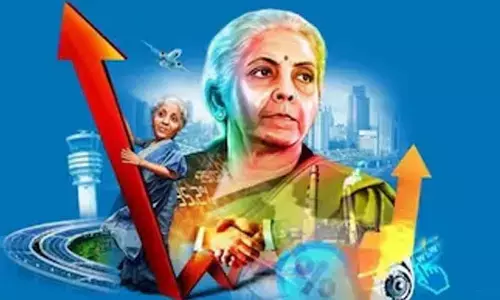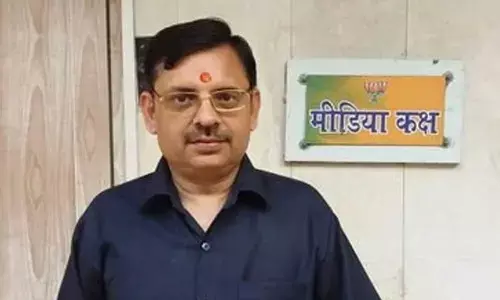Make campuses more inclusive to realise Viksit Bharat @ 2047

Regional and social disparities continue to exist in higher education
Education as a tool for all-round socio-economic empowerment of people has no substitute in the world. It has the power to catapult a nation to the zenith of excellence, development and resilience.
As India has set the goal to be a developed nation by 2047, we need to focus on inclusive quality education for all. Since the majority of our people do not earn so much as to spend adequately on providing quality education to their children, they have to fall back on whatever is accessible and affordable. Many of them manage to enter the holy precincts of top higher education institutions (HEIs) thanks to affirmative measures. However, a large number of them drop out every year for various reasons including discrimination and lack of enabling ambience on the campuses.
Union Minister of State for Education Subhas Sarkar informed the Parliament recently that approximately 13,626 reserved category students from SC, ST and OBC backgrounds, have been dropping out of top academic institutions in the past five years.
In the case of central universities (CUs), 4596 OBC, 2424 SC and 2622 ST students dropped out during the same period. The institutions include IITs andIIMs. In the case of IITs, 2066 OBC, 1068 SC, and 408 ST students dropped out, while in the case of IIMs, the figures were 163, 188, and 91 for OBC, SC and ST students, respectively.
It is nothing less than an alarm bell. No stakeholder can afford to be a passive onlooker too. Explaining the possible reasons behind the drop outs, Sarkar said that in HEIs students have multiple options and they choose to migrate across institutions and from one course or programme to another in the same institution. The migration or withdrawal, if any, is mainly on account of securing seats by the students in other departments or institutions of their choice or on any personal ground. Responding to the query on what the government was doing to address the issue, Sarkar said that the government had taken various steps like fee reduction, establishment of more institutes, scholarship, priority access to national level scholarships to aid the students with poor financial backgrounds to pursue their education.
Sarkar also informed that for the welfare of SC and ST students, schemes like ‘waiver of tuition fees in IITs, grant of national scholarships under Central Sector Scheme, scholarships in institutes, etc., are also there. According to him, in order to proactively address any issues of SC and ST students, institutes have set up mechanisms such as SC/ST Students’ Cells, Equal Opportunity Cells, student grievance cells, student grievance committees, students social clubs, liaison officers and liaison committees. The University Grants Commission (UGC) also issues instructions from time to time to promote equity and fraternity among students.
Equally debilitating is the fact that as many as 98 students died by Suicide in colleges across the country in the last five years. In response to a question in the Rajya Sabha on July 26, 2023, Sarkar had said that ninety-eight students died by suicide in the past five years in higher education institutions including CUs, IITs, IIMs, NITs and IISERs. He informed that the majority of the suicide cases being reported in the last four years were from engineering institutions. In terms of year-wise breakup, the government data shows that 20 student suicides were reported in these institutions in 2023 till July 26, 24 in 2022, seven each in 2021 and 2020, 19 in 2019 and 21 in 2018.
According to National Crime Records Bureau (NCRB), there are various causes for suicides such as professional problems, sense of isolation, violence, family problems and mental disorders, among others.
As regards their preventive measures, the minister said the UGC has also issued guidelines for promotion of physical fitness, sports, students’ health, welfare, psychological and emotional wellbeing at HEIs. The ministry has undertaken various steps such as peer-assisted learning, introduction of technical education in regional languages for students in order to ease the academic stress. The Ministry of Education has also advised the institutions to make the system more robust by including prevention, detection and remedial measures to address possible causes of suicides.
All said and done, we need to put in place a robust mechanism on the campuses which does not only address learning gaps and deprivations of students coming from weaker sections of society but also checks effectively any attempt to discriminate against them on the basis of their caste and religion. Provisions for tutorial classes and special lessons in English language must be expanded and strengthened in every HEI. At the same time, accountability should also be fixed at the level of the Head of the Department of respective subject or discipline in which some students are not doing well for want of academic gaps, which could have been addressed through timely interventions.
In the 21st century, India cannot afford to be lackadaisical in enforcing enabling measures on the campuses, reflecting our diversity as a nation.
NITI Aayog in 2018 published ‘Strategy for New India @ 75’ which states that “India’s higher education GER – calculated for the age group, 18-23 years – increased from 11.5 per cent in 2005-06 to 25.2 per cent in 2016-17. However, we lag behind the world average of 33 per cent and that of comparable economies such as Brazil (46 per cent), Russia (78 per cent) and China (30 per cent). Korea has a higher education GER of over 93 per cent. In addition, regional and social disparities continue to exist in higher education. GER varies from 5.5 per cent in Daman and Diu to 56.1 per cent in Chandigarh. GER is 26 per cent for males and 24.5 per cent for females, with the latter constituting 46.8 per cent of the total enrolment of 35.7 million.”
It further says: “While the GERs for SCs, STs, OBCs and minorities have been increasing, these are still below the overall average in most cases. Quality is a challenge in higher education in India. Few Indian institutions feature in the top 200 in world rankings. In comparison, China has seven universities in the top 150 (3 in top 50) of the Quacquarelli Symonds (QS) world rankings. These rankings did rank three IITs and the IISc amongst the top 20 BRICS universities in 2018. Another issue is the employability of graduates.”
Is there a scope for any kind of complacency so far as the task to upgrade, expand and make our HEIs inclusive is concerned if we wish to become Viksit Bharat by 2047 in the real sense of the term? Certainly, not!

















